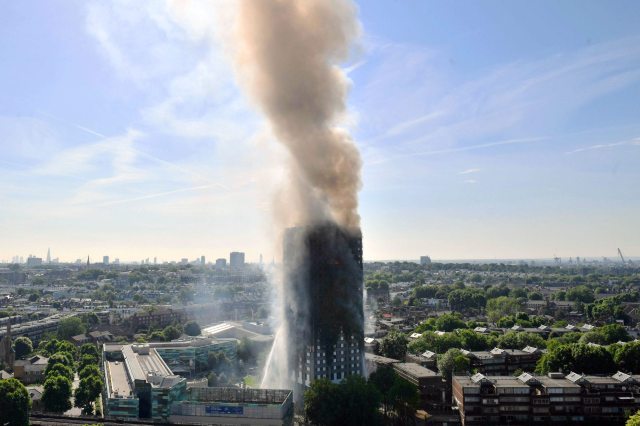Victoria Jones/PA Wire/PA Images

The Grenfell Tower disaster is a multilayered scandal – literally so. But beneath the issue of its flammable, 21st-century cladding, there is the deeper scandal of the tower itself – and high-rise social housing in general.
Why were so many high-rise flats built in the UK (not far off half-a-million in the first three decades after the war)? One might assume that to pile ’em high is to build ’em cheap. But that’s not true. Per unit, flats cost more to build than houses – and the taller the towers, the greater the cost.
As for saving land, it’s complicated. Erecting towers does not necessarily allow us to achieve higher densities than creating streets.
So how do we explain the blocks that dominate our urban landscape? Patrick Dunleavy addresses the question in a compelling article for the Architect’s Journal. He cites five main reasons.
The one that really sticks out is the introduction, by the UK Government in 1956, of a progressive storey height subsidy – “progressive” in that it “increased for every extra storey in the height of a flat block.” So no prizes for guessing what that incentivised.
We forget that the record levels of construction in the post-war decades were enabled – but also necessitated – by record levels of demolition. The policy of slum clearance “created enormous housing stress”:
“They typically took thousands of ‘bedspace years’ out of circulation through blight and demolitions enacted years before replacement housing was completed. For inner urban councils this created intense pressures to cram the maximum numbers of people into the very next redevelopment. For many years, ministers, councillors and planners also reiterated the myth that high rise was essential for densification – but in fact the net gains made were small.”
The imperative for high rise may have been a myth, but it suited the big builders very well:
“…the largest UK construction firms heavily backed high rise as a protected market where small builders could not compete. The Whitehall department (MHLG) was anxious to foster industrial concentration into fewer firms as a way of speeding up lagging housing production.”
It also suited the architects and planners who were “heavily influenced by Corbusian dreams of ‘towers in a park'” and “intoxicated by replacing ‘overcrowded’, mixed-use streets with segregated uses and a coarse-grained, ordered bureaucratic landscape.”
Finally, the people who should have had the biggest say – i.e. the residents – were ignored and powerless.
We wouldn’t make any of those mistakes today, would we? Only joking, of course we would.
The storey height subsidy may be long gone, but government still blows billions on perverse subsidies like “Help to Buy” (which mainly helps to sustain rampant house price inflation). We continue to rely on high-rise to achieve desired densities instead of enabling the creation of streets through land and planning reform. Architects and planners still fetishise the tower and the block at the expense of human-scale architecture – and the big builders have cemented their control over construction.
It is only on democratic empowerment that we see some glimmers of hope – for instance the gradual introduction of a neighbourhood planning system. Nevertheless, the process of reform needs to go much further and faster – and it must fully embrace those that have the least control over where they live.
Beyond the priority of public safety, we need to recognise the deeper dysfunction in the way we plan for the future. No more cover-ups. We must act on the truth.










Join the discussion
Join like minded readers that support our journalism by becoming a paid subscriber
To join the discussion in the comments, become a paid subscriber.
Join like minded readers that support our journalism, read unlimited articles and enjoy other subscriber-only benefits.
Subscribe